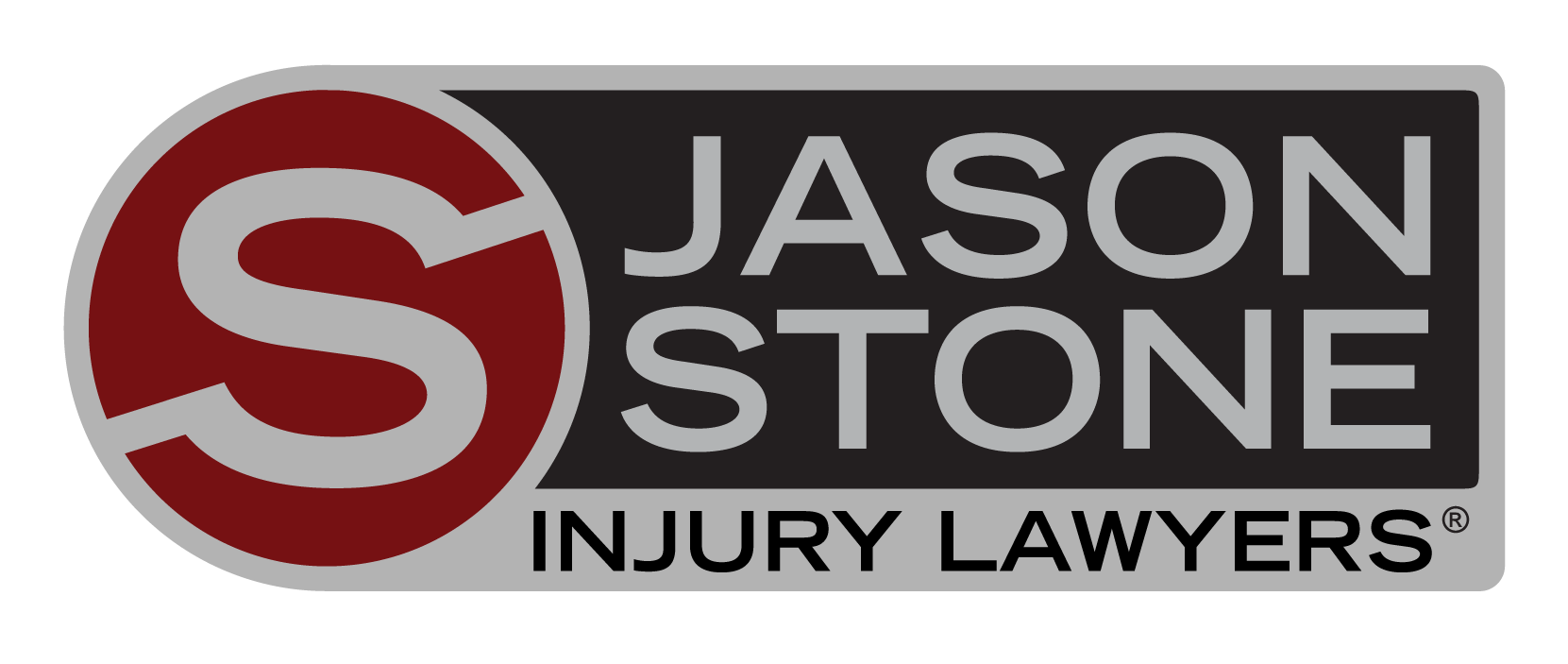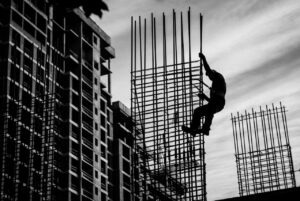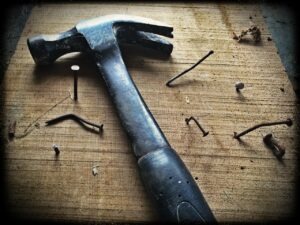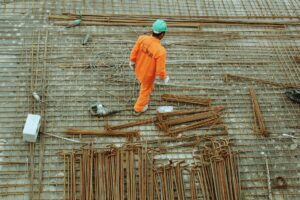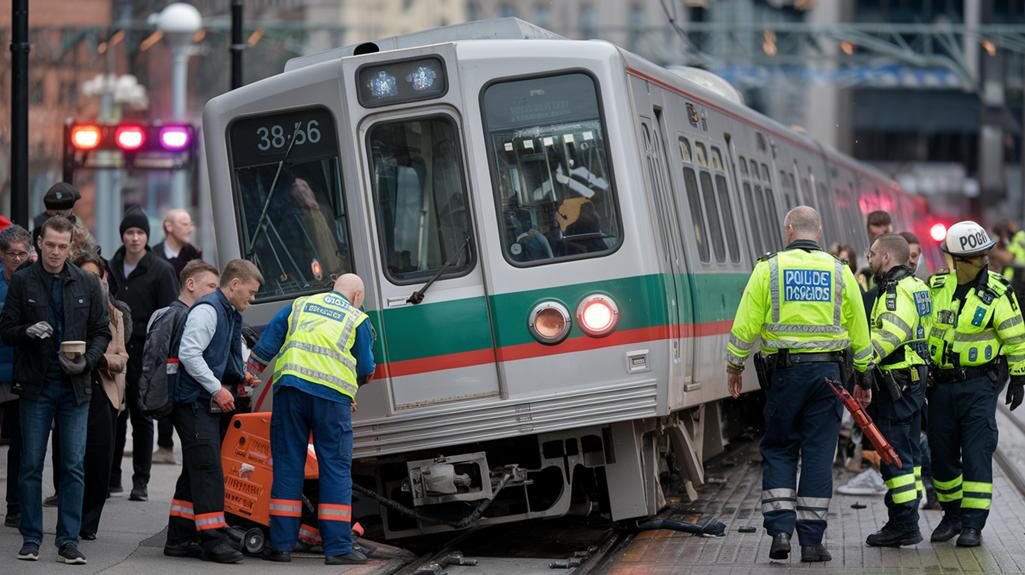The number of workers in the construction industry in 2019 reached 11.4 million people, a climb of more than 25% over the previous eight years. The average age of these workers was 42.7, slightly higher than the average for all other industries combined. Construction work is a dangerous occupation. Workers face numerous safety risks inherent in the jobs they do.
Out of the 5,333 on-the-job fatalities in 2019, 1,061 — nearly 20% of the total — occurred in the construction industry. For workers in all occupations, the fatality rates for those over 55 rose by 56% between 1992 and 2017. In Massachusetts, workers 55 and over accounted for 25% of all fatal job injuries during this same period. In the construction industry, the number of fatal job injuries between 2016 and 2019 was highest for those aged 45-64. Find out what are the main causes of construction accidents.
The Focus 4 for the Construction Industry
The Occupational Safety and Health Administration identifies four types of accidents that result in the highest losses on construction sites. These four accident categories are:
- Falls
- Struck-by
- Electrocutions
- Caught-in or caught-between
In 2019, 64.3% of all deaths in the construction industry were due to one of these four main causes of construction accidents.
1. Fall Hazards
Fall hazards aren’t unique to the construction industry, as employees in all environments encounter surfaces, obstacles or situations that could cause a person to fall. According to OSHA, falls cause 40% of construction worker fatalities. In 2019, 401 construction workers died due to a fall, up from 321 in 2018. A total of 146 workers died after falling off a roof, while 93 died falling from ladders and 52 deaths occurred after falling off scaffolding.
OSHA regulations require construction sites to provide fall protection for any surface more than 6 feet off the ground. Contractors are obligated to ensure the structural integrity of work surfaces and utilize protective measures such as guardrails, personal fall arrest systems or safety nets.
Falls, slips and trips also lead to many non-fatal injuries, accounting for 32% of all injuries in the private construction industry that resulted in lost work time in 2019. The median number of missed workdays was 28. A total of 13,770 workers were injured after falling from a higher level to a lower one, a significant increase the 11,960 injuries the year before. 7,400 people were injured after falling on the same level, while slips and trips accounted for 3,620 accidents.
2. Struck-By Hazards
Struck-by hazards refer to a worker being hit by a falling, flying, rolling or swinging object. Falling objects are common on construction sites, especially when scaffolding, ladders and cranes are present. Flying objects also pose a significant risk. Power tools are one source of flying debris, whether it’s nails fired from a nail gun or wood chips from a table saw.
Injuries and deaths from rolling objects include those that occur when a moving vehicle strikes a worker in the work zone. These can happen when the driver puts the vehicle into reverse and doesn’t see anyone behind the truck, car or construction equipment. Construction sites often have mechanical equipment that workers use to move large pieces of material around the site or into place. Frequently, this movement results in swinging objects (such as metal beams) that can strike a worker.
In 2019, 170 construction workers died in a struck-by accident, nine fewer than in 2018. Workers getting hit by an object or piece of equipment caused 90 fatalities, while 80 people died after being struck by a vehicle, compared to 113 and 66, respectively, in 2018.
3. Electrocution Hazards
Construction workers face the following primary sources of an electrical hazard:
- Extension cords: Workers use extension cords regularly. The wear and tear from heavy use lead to damaged cords, often with exposed wiring or loose prongs. When workers continue to use these cords, they risk electrocution.
- Energized sources: Electrical equipment, tools and wiring are all potential sources of electrocution at a worksite. Workers who come into contact with live wires or faulty equipment can be seriously injured.
- Powerlines: Whether overhead or buried, powerlines have a high voltage that can cause death or severe burns and shocks.
Often, workers receive their injuries as a result of direct contact with the electrical source. However, indirect electrocution also occurs, which may happen if exposed wiring comes into contact with water or a metal pipe while a worker is handling the equipment. In 2019, 79 construction workers died as a result of electrocution, down from 87 in 2018.
4. Caught-In or Caught-Between Hazards
This last category in OSHA’s focus four for construction workers consists of accidents that cause a worker to be caught in or caught between two objects. Collapsing materials and cave-ins lead to more fatalities than crushing accidents from sliding, rolling or shifting equipment or objects. A total of 46 workers died after getting caught in a cave-in or under collapsing materials in 2019, up from 35 for the previous two years. Crushing accidents led to 13 fatalities in 2019 versus 20 in 2018.
The Impacts of Non-Fatal Injuries
OSHA’s focus four hazards for construction highlights the significant risk workers in the industry face. The four biggest hazards lead to the highest number of fatalities every year. However, construction workers often sustain serious injuries that are less likely to result in death. These injuries can still lead to significant losses.
In 2019, 112.3 out of every 100,000 full-time-equivalent construction workers were injured on the job, leading to 79,660 non-fatal injuries. The rate of injuries is higher than in any other industry, except for agriculture. Contact with an object or equipment was one of the leading causes of construction accidents with non-fatal injuries, with more than 26,000 reported in 2019, followed by falls, trips and slips.
Work injuries have a significant physical and financial impact. According to the National Safety Council, the total cost for workplace injuries in 2019 was $171 billion. This figure includes medical expenses, administrative fees and lost income. A large percentage of these expenses would have come from the construction industry, given the rates of injuries in the industry compared to other sectors.
The Benefits of a Personal Injury Lawyer
Massachusetts requires that all employees be covered under workers’ compensation insurance. According to the state, anyone who works for another under any sort of contract, even if it is an oral agreement, is considered an employee. For the purposes of workers’ compensation, construction workers are presumed to be employees. Workers’ compensation should cover their on-the-job injuries. Often, general contractors and insurance companies attempt to deny workers’ compensation claims or limit an injured worker’s benefits.
A personal injury lawyer who has experience with construction site accidents and knows Massachusetts workers’ compensation laws can help you fight for full compensation. Benefits for a work injury include coverage for medical expenses and lost wages, as well as rehabilitation training, job retraining and disability when necessary.
The Personal Injury Lawyers You Can Trust
At Jason Stone Injury Lawyers, we have extensive experience with the causes of construction accidents and site injuries and in Boston. We’ll fight to get you the compensation you need. We understand the financial burdens involved when you get injured at work. Our Stone Cold Guarantee means that we don’t get paid until you do. If you’ve been hurt in a construction site accident, get in touch with us today. There’s no obligation, just information.
Not Trusting What You’re Being Told?
Better Phone Stone
800-577-5188
 START MY NO OBLIGATION CONSULTATION
START MY NO OBLIGATION CONSULTATION